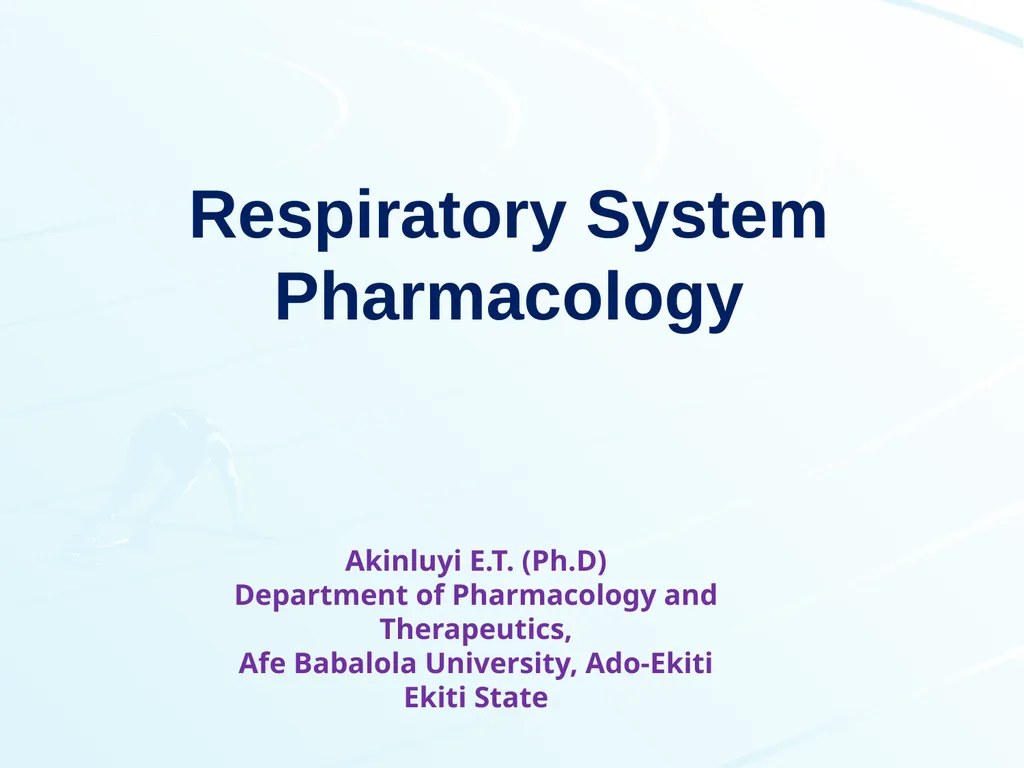
Author : faustina-dinatale | Published Date : 2025-08-16
Description: Respiratory System Pharmacology Akinluyi E.T. (Ph.D) Department of Pharmacology and Therapeutics, Afe Babalola University, Ado-Ekiti Ekiti State The regulation of respiration Two pathways are involved in the regulation of respirationDownload Presentation The PPT/PDF document "" is the property of its rightful owner. Permission is granted to download and print the materials on this website for personal, non-commercial use only, and to display it on your personal computer provided you do not modify the materials and that you retain all copyright notices contained in the materials. By downloading content from our website, you accept the terms of this agreement.
Here is the link to download the presentation.
"Respiratory System Pharmacology Akinluyi E.T."The content belongs to its owner. You may download and print it for personal use, without modification, and keep all copyright notices. By downloading, you agree to these terms.













